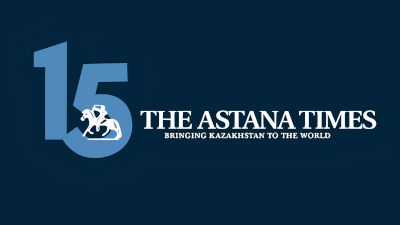It is nothing new to suggest that regional cooperation in Central Asia holds significant potential for the region. Nor is it novel to recall the shared heritage and history, including the famous Silk Road, that links Central Asian countries. And yet there is one largely overlooked area of cooperation, which has ever-growing importance and urgency…

Lilia Burunciuc
One Health
Among the uncertainty enveloping the world today, what remains clear is that zoonotic disease outbreaks will continue to occur. Zoonotic diseases (zoonoses) are animal diseases and infections that transmit to humans – for example, SARS, Ebola, H1N1 (swine flu), brucellosis, and rabies. The World Organization for Animal Health (OIE) estimates that 60 percent of existing human infectious diseases are zoonotic, and out of the five new human diseases that emerge each year, three are of animal origin.
The One Health initiative, while it may sound deceptively simple, is in fact a complex effort to bring together people, knowledge, expertise, and information to improve the ties between humans, animals, and environmental health. This approach springs from the understanding that human and animal health are deeply interconnected and co-exist in one ecosystem.
Through One Health, we can identify threats sooner, exchange crucial information, and as a result, take early life-saving action.
But One Health does not stop there.
The One Health approach can help strengthen systems to support recovery from infectious disease outbreaks. The knock-on effects will include improved global public health, sustained economic growth, and poverty alleviation.
As humans continue to use land irresponsibly, for example, by neglecting sanitation practices in wet markets for food and agricultural products, sidestepping adequate biosecurity in agriculture, and failing to address climate change threats, the risks of new zoonotic disease outbreaks, as well as their spillover effects and rapid spread, will remain and likely increase. Add to this destructive mix travel, trade, and urbanization, and one might conclude that the fate of humanity is bleak indeed.
One Region
Located at the crossroads of global value chains, with countries that rely heavily on labor migration, Central Asia is particularly vulnerable. At the same time, Central Asia, and in fact the wider region, is well placed to prevent and tackle future disease outbreaks.
This is due to the shared epidemiological past of the countries of the former Soviet Union, which once boasted an elaborate network of antiplague centers, research institutes, and laboratories with trained personnel. Since some parts of this legacy remain, the region already has a built-in foundation for implementing the One Health approach.
Other features that Central Asian countries share include ecotypes, agro-ecological zones, human and animal population densities, farming systems, movement and trade patterns, and existing mechanisms for regional cooperation.
One Step at a Time
The One Health approach is a comprehensive effort, as it seeks to establish a common platform that houses an interconnected web of institutions, services, laboratories, and people who are able to share knowledge, exchange information and experiences, and learn and work together to ensure the prevention and timely detection, response, and management of disease outbreaks.
For One Health to take off in Central Asia, it will need investment, leadership, and the engagement of member countries. At the World Bank, we are ready to support and see this initiative through.
We have long helped the Central Asian countries to come together, building on their commonalities and complementarities, to work toward shared goals in trade, connectivity, water security, disaster preparedness, climate, and other issues.
We have also been collaborating with them to strengthen the various systems that would work together under the One Health umbrella: health care systems, surveillance, livestock, agriculture, climate, and environmental protection. Our current portfolio consists of nine relevant projects amounting to $886 million.
In addition to emergency operations in response to the COVID-19 (coronavirus) pandemic, we are assisting the Kyrgyz Republic, Tajikistan, and Uzbekistan in improving their national surveillance systems for infectious disease control. This effort will also prove useful in establishing regional networks to coordinate risk management in the event of transboundary disease outbreaks.
In livestock and agriculture, we can build on the work already accomplished through such initiatives as the Integrated Dairy Productivity Improvement Project in the Kyrgyz Republic and the Livestock Sector Development Project in Uzbekistan.
In both countries we are helping address weaknesses in public and private veterinary services to improve animal health. In Kazakhstan, the recently approved Sustainable Livestock Development Program for Results, in addition to strengthening veterinary services, will improve animal traceability and the sustainability of beef value chains.
With over two decades of involvement in the region, the World Bank is well placed to act as a convener and to provide regional program design expertise and implementation support. This year, we adopted a Regional Engagement Framework for Central Asia, the first indicative work program prepared for the region since the Bank opened offices there in the 1990s. We are thus increasing our effort to support a locally driven process of deeper economic cooperation within Central Asia and across Eurasia.
While viruses flow freely across borders, important knowledge, information, and action have some catching up to do. The COVID-19 pandemic has been a wake-up call on the need to improve disease preparedness and surveillance systems to deter such crises from happening again.
Let’s not push the snooze button this time.
The author is the Regional Director for the World Bank in Central Asia and is based in Almaty, Kazakhstan.


